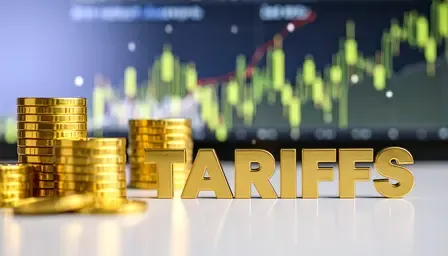Are Chinese Companies Shifting Focus to the Global South Due to Rising US Tariffs?

Synopsis
Key Takeaways
- Chinese exports to the Global South significantly exceed those to traditional markets.
- Trade with the Global South represents nearly 20% of GDP for many nations.
- Chinese investments in Southeast Asia have quadrupled in the last decade.
- The shift towards the Global South is a strategic response to US tariffs.
- This could lead to a new global trade order where South-South trade is pivotal.
New Delhi, Aug 19 (NationPress) Prominent Chinese companies are increasingly turning their attention to the Global South, driven by escalating US tariffs and a deceleration in domestic economic growth, as noted in the latest report from S&P Global.
The document, titled 'China Inc. Shifts to the Global South Amid Tariff Pressures,' reveals that this trend has intensified since 2018.
According to Charles Chang, S&P Global Ratings’ Greater China Country Lead for corporates, "Trade dynamics are evolving rapidly between China and the Global South." He stated that China now exports over 50% more to these regions—approximately $1.6 trillion—compared to the US and Western Europe combined, which stands at around $1 trillion.
Chang elaborated, "The surge in trade and investments has enabled Chinese firms to secure a foothold in these markets." On average, trade with China's top 20 partners in the Global South constitutes nearly 20% of these nations’ GDP.
"While these investments carry significant execution risks, they are poised to persist—not solely to evade new tariffs or secure resources but also to cultivate end markets and lessen dependence on US sales," Chang remarked.
As Chinese firms continue their journey towards the Global South, this could reshape the landscape of global trade, establishing South–South trade as a new focal point, with Chinese multinationals taking the lead.
The report further indicates that Chinese companies are not only redirecting goods for re-export through Global South territories but are also increasingly establishing production there. This necessitates investment in local economies. For instance, investment from Chinese firms in the four largest trading partners in Southeast Asia has surged, quadrupling over the past decade to an average of $8.8 billion annually.
New tariffs are prompting Chinese companies to investigate markets that offer attractive conditions, such as favorable policies or strengthened commercial ties with China. Beijing has recently expressed that it views the rise of the Global South as integral to future development, a perspective echoed in the strategic plans of numerous leading Chinese firms.
The report defines the Global South as encompassing the majority of the developing world.









